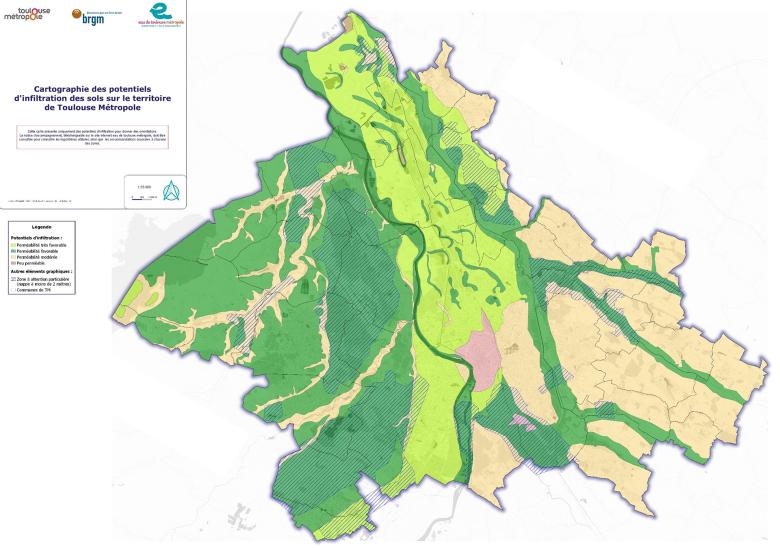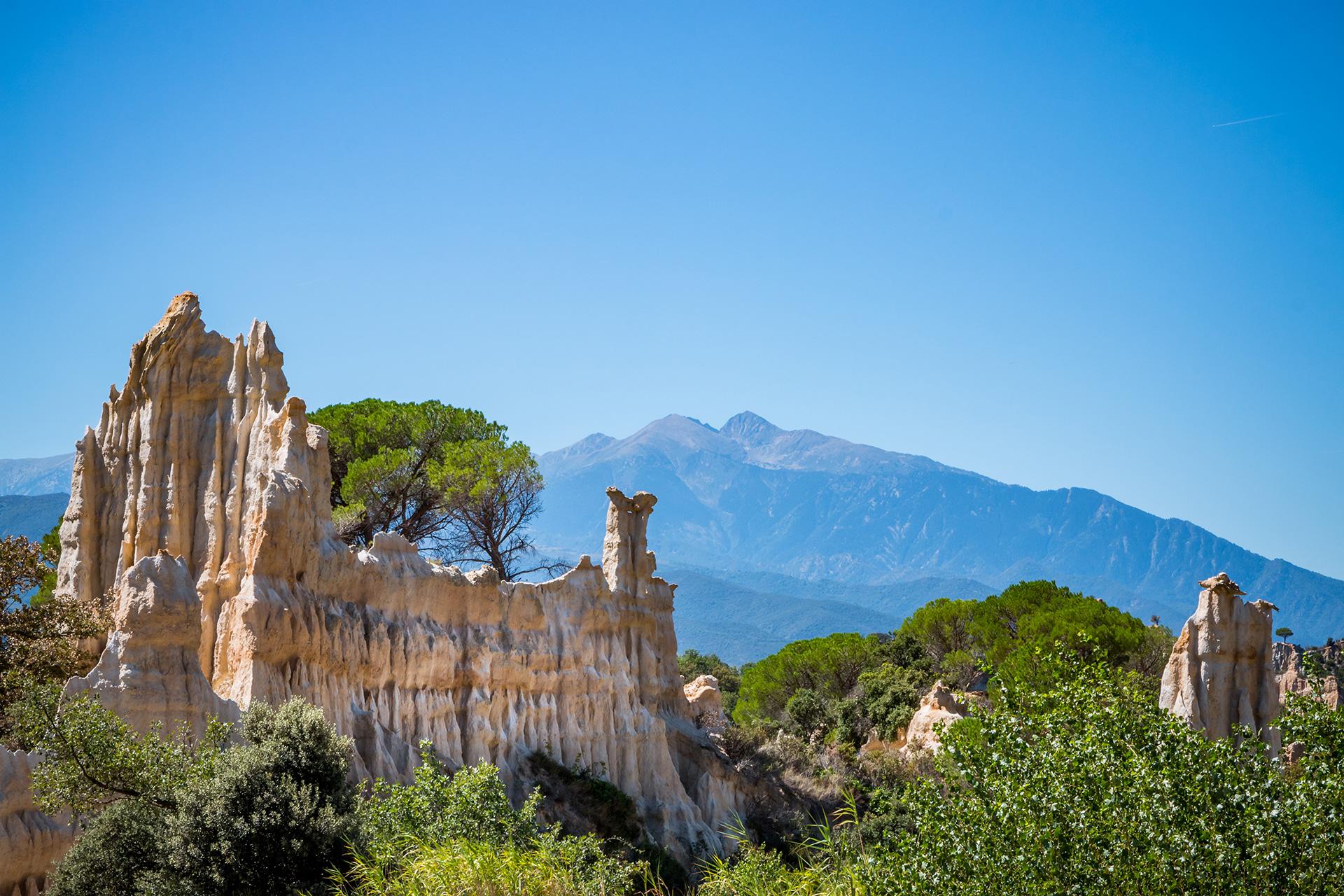
The final Infiltration Capacity Index (ICI) is calculated by accumulating as much information as possible (Greater Toulouse area, 2022).
© BRGM
The need
Stormwater management has undergone a paradigm shift over the last two decades. With the development of less complex and less expensive techniques, water has reclaimed a central role in urban planning. This new strategy is based on the integrated management of stormwater, using alternative techniques that give priority to management at source. It paves the way for a range of external benefits promoting nature and human well-being in the city, as well as preventing urban heat islands, conserving resources through infiltration, and reducing the pollution transported by stormwater. Against this backdrop, the Greater Toulouse authorities asked BRGM to produce a zoning map showing the stormwater infiltration capacity of the local subsoil.
Results
This project paved the way for a number of innovative developments, including a new database management system (DBMS) drawing upon local geotechnical data, a meta model of rising groundwater levels and a three-dimensional model of soil permeability with over 14 million grid cells. Calculations of the Infiltration Capacity Index (ICI) made maximum use of available data. This complex and original calculation took account of the hydrogeological characteristics of the Greater Toulouse area. The method used was based on a suggestion by BRGM and involved accumulating as much information as possible. Tested at local inspection points prior to approval, the method made it possible to produce a zoning map (from high capacity to low capacity) comparable to the one produced for the "Phoebus" project on behalf of the Greater Rennes area. The resulting map can be used as a motivational decision-support tool. BRGM adopted a strong educational focus in presenting the results of the project to the various stakeholders from the local water industry.

We would like to thank BRGM for successfully condensing a major research project into a few slides, using simple, easily understandable terminology, and also for accepting that only a small part of the work carried out can be put into practical use for the moment. It was a pleasure to work with the project team. I would like to take this opportunity to commend their ability to listen to our problems and to continuously adapt their work to our needs.
Using the results
Taking the map produced as part of the CAPITOUL project, the water and planning departments of the Greater Toulouse authority added a colour chart based on pastel tones for easier communication. The new map provides guidance in terms of infiltration potential for preliminary studies. However, it does not replace:
- the need for project developers to carry out hydrogeological surveys in relation to their project, to characterise the aquifer and conduct permeability tests,
- the legal framework and regulatory requirements applicable as part of the Environmental Code,
- the need to comply with other regulations (risk prevention in relation to flooding, land movements, clay shrinkage and swelling, etc.).
One of the difficulties encountered in calculating infiltration capacities during the project was the lack of long-term monitoring and the absence of dense piezometric networks in the Greater Toulouse area. The local authorities are now planning to develop a new network of around forty inspection points, with a system of regular monitoring.
In addition, all the data collected and processed during this project may be used in other projects undertaken by the Greater Toulouse authority to prevent soil sealing.
The partners
- Greater Toulouse area





